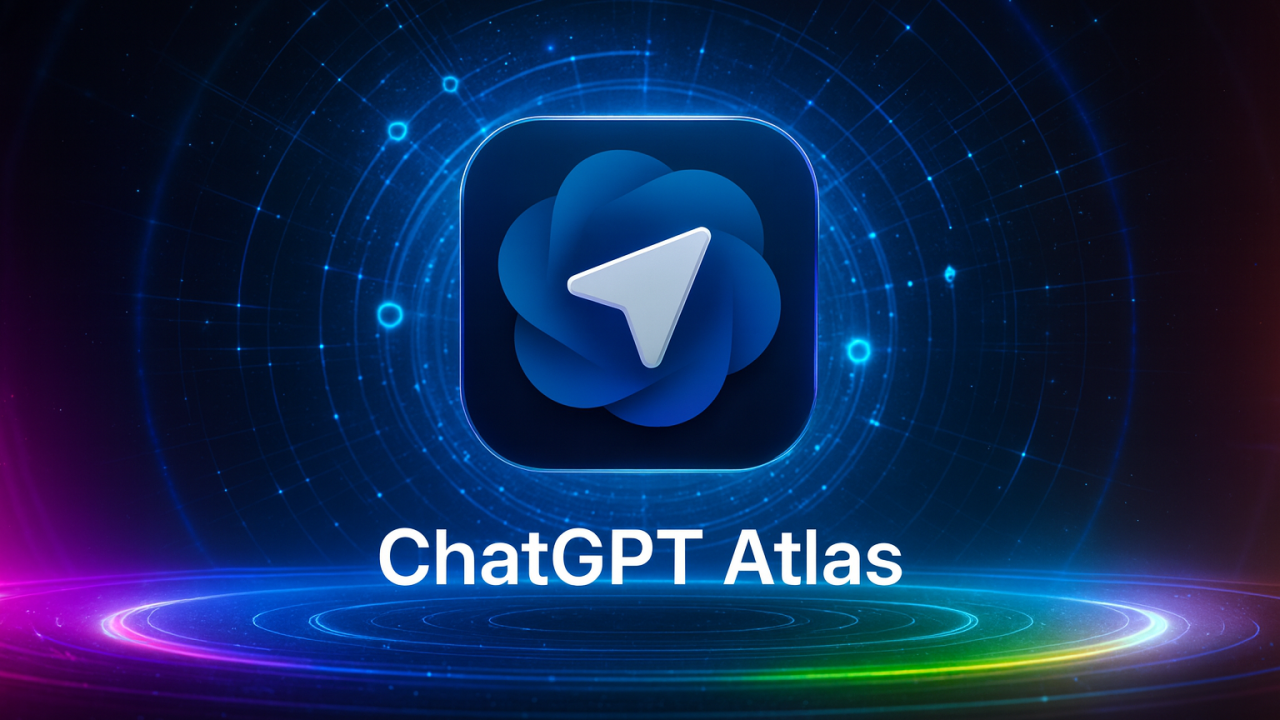What is ChatGPT Atlas? A New Map for the Age of AI Thinking
There’s a strange thing happening on the internet right now. We used to browse the web — type, click, scroll, repeat. But that’s starting to feel... primitive. Now we’re talking to it. The rise of AI models like ChatGPT has changed not just how we find information but how we think with it.
And in the middle of that shift, something called ChatGPT Atlas has started to appear in conversations — not as a single product or update, but as a concept: the next evolution of how humans and AI navigate knowledge together. It’s like a new kind of map — not one made of coordinates, but of ideas, reasoning, and context.
Let’s unpack what that means.

The Origins of “ChatGPT Atlas”
So what is ChatGPT Atlas?
It’s not an official version of ChatGPT — at least not yet. Think of it more as a framework or metaphor for an intelligent, interconnected web of AI-assisted exploration. Imagine ChatGPT, but instead of being a static chat window, it becomes a dynamic research companion — tracking, organizing, and evolving your line of inquiry across time, context, and tools.
In other words: ChatGPT Atlas is what happens when generative AI grows from a “text generator” into a cognitive navigator.
A browser like Sigma AI Browser is where that vision starts to materialize — by embedding an AI agent directly into your digital environment. It doesn’t just answer questions. It understands your journey.

From Search to Sensemaking
For years, our digital workflows have looked like this:
The big leap here isn’t just automation — it’s sensemaking. AI agents inside browsers can now:
- Track what you’ve already asked.
- Understand how one topic connects to another.
- Learn from your feedback and style.
- Summarize, compare, and even challenge information sources.
Essentially, the Atlas metaphor makes sense: you’re no longer lost in a sea of tabs — the AI becomes your cartographer.
The Rise of Contextual Intelligence
One of the most underrated shifts in AI is the move from prompt-response systems to contextual ecosystems.
Traditional models, even ChatGPT itself, used to “forget” the moment you refreshed a session. But new AI frameworks — and browsers that host them — are building long-memory agents capable of retaining and adapting to your goals.
Here’s how that evolution looks in practice:
The promise? A tool that remembers not just what you said — but why you said it.
Data: The Hidden Backbone of Deep Research
If ChatGPT Atlas represents an AI that helps humans think, then the fuel for that intelligence is multi-source reasoning — not just “scraping the web.”
According to a 2024 study by MIT CSAIL, large-scale reasoning models that integrate retrieval-based learning from multiple domains outperform static models by up to 37% in factual accuracy and 42% in contextual precision when handling research queries.
And that’s where deep research tools — powered by AI browsers — come in. They don’t just summarize sources; they triangulate between them.
You can almost feel the cognitive load lifting.
How ChatGPT Atlas Works
- Input Layer: User prompt or question
- Retrieval Layer: Web and document search
- Reasoning Layer: Contextual understanding and synthesis
- Feedback Layer: User refinement
- Memory Layer: Long-term learning and adaptation
Together, these layers form what we call “AI Deep Research Flow.”
Why Browsers Are Becoming the True AI Platforms
Here’s the twist: the most powerful AI isn’t in the cloud — it’s becoming part of your browser.
An AI browser, like Sigma AI Browser, turns the act of browsing into an interactive dialogue. You’re not switching between tabs and apps — your agent sits beside you, watching context, retrieving data, and even drafting your next move.
And when that AI has long-term memory? It becomes an Atlas in the truest sense — mapping your evolving understanding, day after day.
The Broader Impact on Research and Learning
The implications go beyond convenience.
Educators are experimenting with AI research assistants to teach students how to think critically rather than just how to search. Knowledge workers use AI browsers to compress hours of analysis into minutes. Even scientists are training AI agents to synthesize preprints and peer-reviewed work for meta-analysis.
According to Nature (2024), AI-assisted literature reviews are now reducing “time-to-insight” by an average of 63%, with notable improvements in bias detection and data transparency.
That’s not small stuff — that’s a paradigm shift.
The Road Ahead
ChatGPT Atlas isn’t a single destination — it’s a signpost.
It’s where AI is heading: from chatbots to companions, from prompts to partnership. Whether you call it “AI Deep Research,” “contextual browsing,” or “cognitive augmentation,” the message is the same — AI isn’t just changing how we search, it’s changing how we think.
And maybe, someday soon, we’ll stop calling it “AI assistance” at all. It’ll just be… how we browse.
FAQ
1: Is ChatGPT Atlas an official OpenAI project?
A: Not directly. It’s more a conceptual movement — describing the fusion of AI reasoning, browsing, and context.
2: How is this different from normal ChatGPT?
A: ChatGPT is great for single queries. ChatGPT Atlas represents continuity — an AI that remembers your goals and context over time.
3: Where can I experience something like this?
A: Tools like Sigma AI Browser are already bringing this to life with built-in AI agents capable of contextual browsing and persistent memory.










